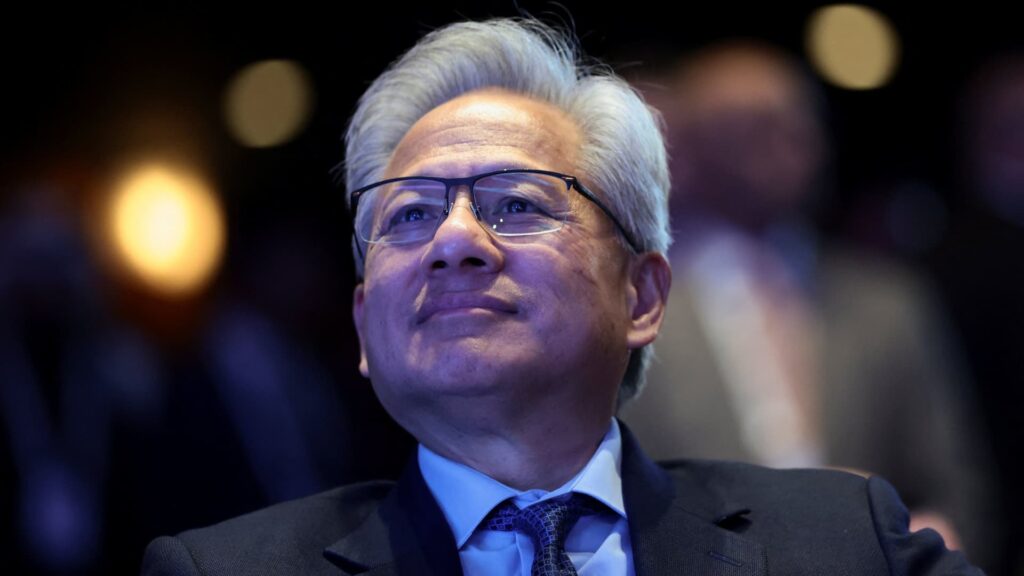Nvidia reported strong earnings and forecasts Wednesday, in what analysts saw as a clear signal for continued spending on AI infrastructure. Less clear, however, is whether the results can dispel fears of an AI bubble in markets. Fears have grown in recent months that massive investment in AI by major tech companies could outpace realistic returns, leading some industry insiders and analysts to predict an AI bubble. While Nvidia ‘s earnings are widely viewed as an important gauge of the AI industry’s health, some analysts warn that its performance doesn’t tell the whole story. “I think a lot of people will be relieved, but they really didn’t need to worry about Nvidia heading [into earnings] anyway,” Gil Luria, head of technology research at D.A. Davidson, told CNBC on Thursday. Concern about [an AI bubble] actually isn’t an Nvidia problem. The concern is about companies raising a lot of debt to build data centers. Head of technology research at D.A. Davidson Gil Luria The analyst noted that Nvidia’s customers, including Microsoft , Amazon , Google and Meta , had already telegraphed plans to accelerate spending on AI chips, and that was reflected in Nvidia’s results. This strong demand has also been a boon for Nvidia-related chip stocks, with its key suppliers in Asia trading higher on Thursday. However, Luria said, “concern about [an AI bubble] actually isn’t an Nvidia problem. The concern is about companies raising a lot of debt to build data centers.” Nvidia’s AI chips, also known as graphics processing units, are used in data centers to provide the computing power needed to train and run AI services. These data centers are often owned by specialized operators and major tech companies like Microsoft and Google, known as hyperscalers. As these companies prepare to meet growing AI demand, they’ve been financing data center roll-out with debt. “Any concerns about Nvidia were certainly laid to rest [with Nvidia’s earnings], but that doesn’t mean that we don’t need to keep an eye on companies lending or borrowing to build data centers,” Luria said. The analyst described data centers as inherently speculative investments that could face a reckoning two or three years from now when the world reaches full capacity and the cycle rolls over. Even so, he added, “Nvidia will keep selling chips one way or another.” AI chips vs. AI promise Other analysts who spoke to CNBC drew a clear line in the sand between AI chip companies like Nvidia and downstream players, including hyperscalers and firms actually building AI models like Chat-GPT maker OpenAI. “Nvidia’s earnings are a strong signal of AI infrastructure spending, but they’re not a reliable gauge of whether AI economics are truly maturing across the industry,” said Billy Toh, regional head of retail research at CGS International Securities Singapore. “To understand the broader industry’s stability, it’s more meaningful to look at actual adoption and monetization of AI services at companies like Microsoft, Adobe , and other enterprise platforms, where real customer demand and recurring revenue ultimately confirm whether the AI boom is sustainable,” he added. In addition to concerns about hyperscalers taking on debt, AI developers such as OpenAI posting weak revenue relative to their heavy spending have been a source of unease for some investors. That lack of revenue for AI companies has not been felt by Nvidia, which dominates advanced chips and chip software and has deep integration across the AI ecosystem, giving it pricing power and profitable demand. “Even if many AI startups struggle, Nvidia still sells to hyperscalers, sovereign AI initiatives, and enterprises building core infrastructure,” Toh said. “This dynamic helps justify its trillion-dollar market cap and why investors view it as the safest way to gain exposure to AI,” he said, though that protection will fade as the AI build-out phase slows. Bulls on parade Rolf Bulk, equity research analyst at New Street Research, agreed with the distinction between Nvidia’s earnings and the broader AI market. However, he still saw Nvidia’s results as a factor that could calm AI bubble fears in the near term. “It’s an indicator that hyperscalers expect demand for compute to continue to grow strongly in 2026 and beyond,” he told CNBC. “Of course, these GPUs need to continue to be well utilized to generate a return for the hyperscalers and AI companies. That is the bet they’re making,” he added. While Nvidia may not be a perfect barometer of the AI bubble, analysts like Bulk still see long-term growth ahead for the AI market. “AI infrastructure demand consistently exceeds available capacity, with OpenAI, Anthropic, Amazon, Google, and others all noting that customer demand exceeds their ability to provide the necessary compute,” he said. Meanwhile, strong believers in AI, who already discard fears of a bubble, were likely to see Nvidia’s earnings as yet another bullish sign for the broader industry. “This is not a bubble. It’s just the beginning,” said Ray Wang, Constellation Research chairman and AI Forum co-founder, citing Nvidia’s $500 billion in bookings for its advanced chips through 2026. Dan Ives of Wedbush Securities echoed that sentiment in an email to CNBC, calling Nvidia’s results “a validation moment of no AI bubble and instead early days of the AI Revolution.” “There is one chip in the world fueling the AI Revolution and that is Nvidia,” Ives added. Nvidia CEO Jensen Huang himself dispelled fears regarding AI in an earnings call on Wednesday. “There’s been a lot of talk about an AI bubble,” he said. “From our vantage point, we see something very different.” — CNBC’s Martin Soong contributed to this report
https://www.cnbc.com/2025/11/20/nvidia-sent-a-strong-signal-on-ai-infrastructure-but-is-it-a-bubble-barometer-.html


